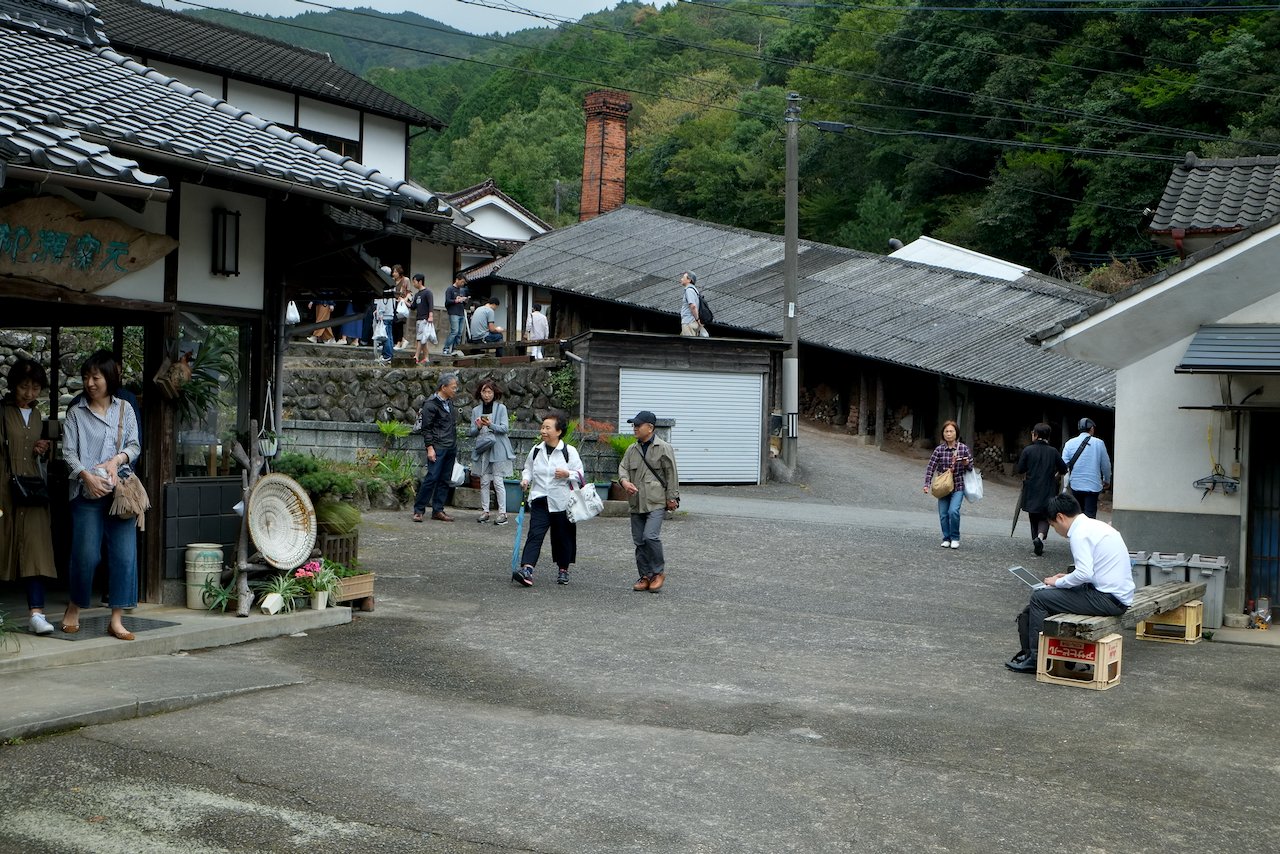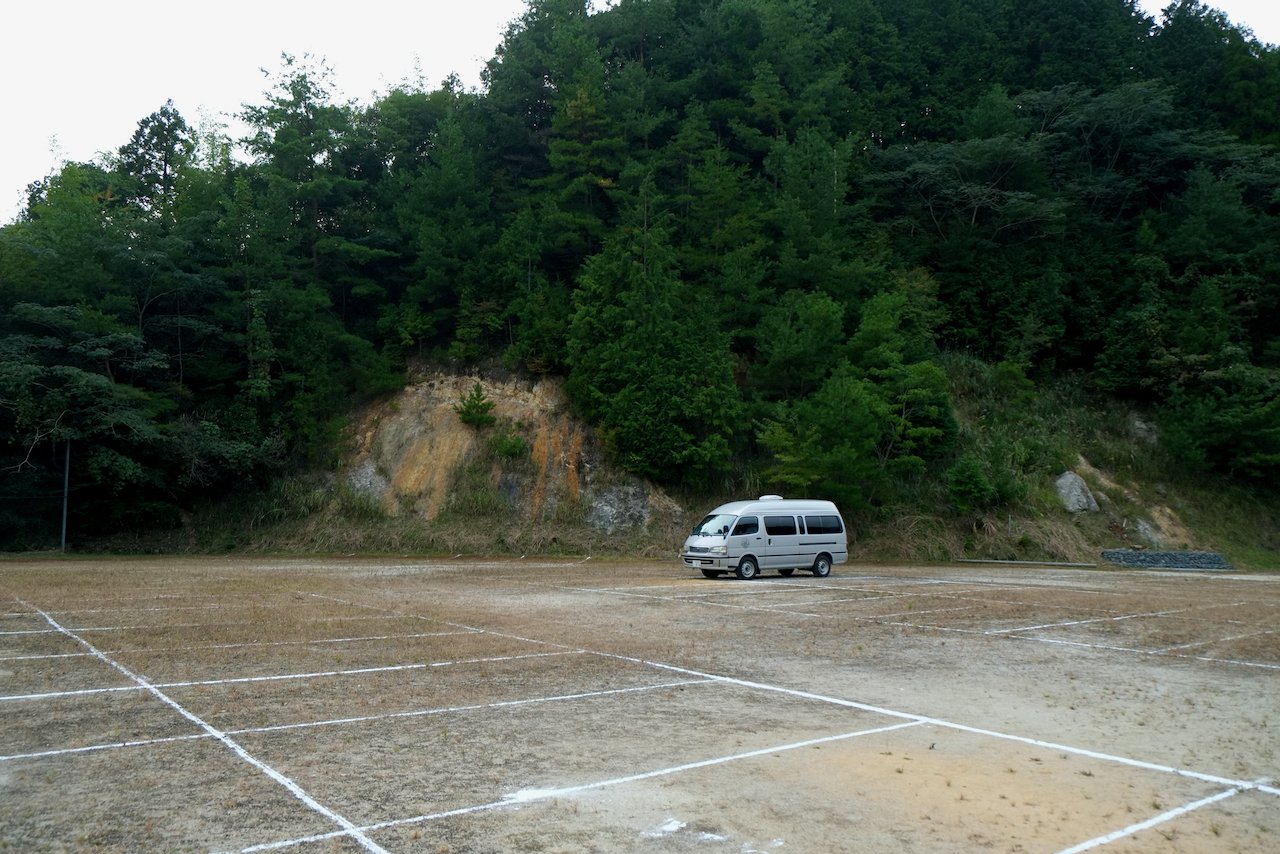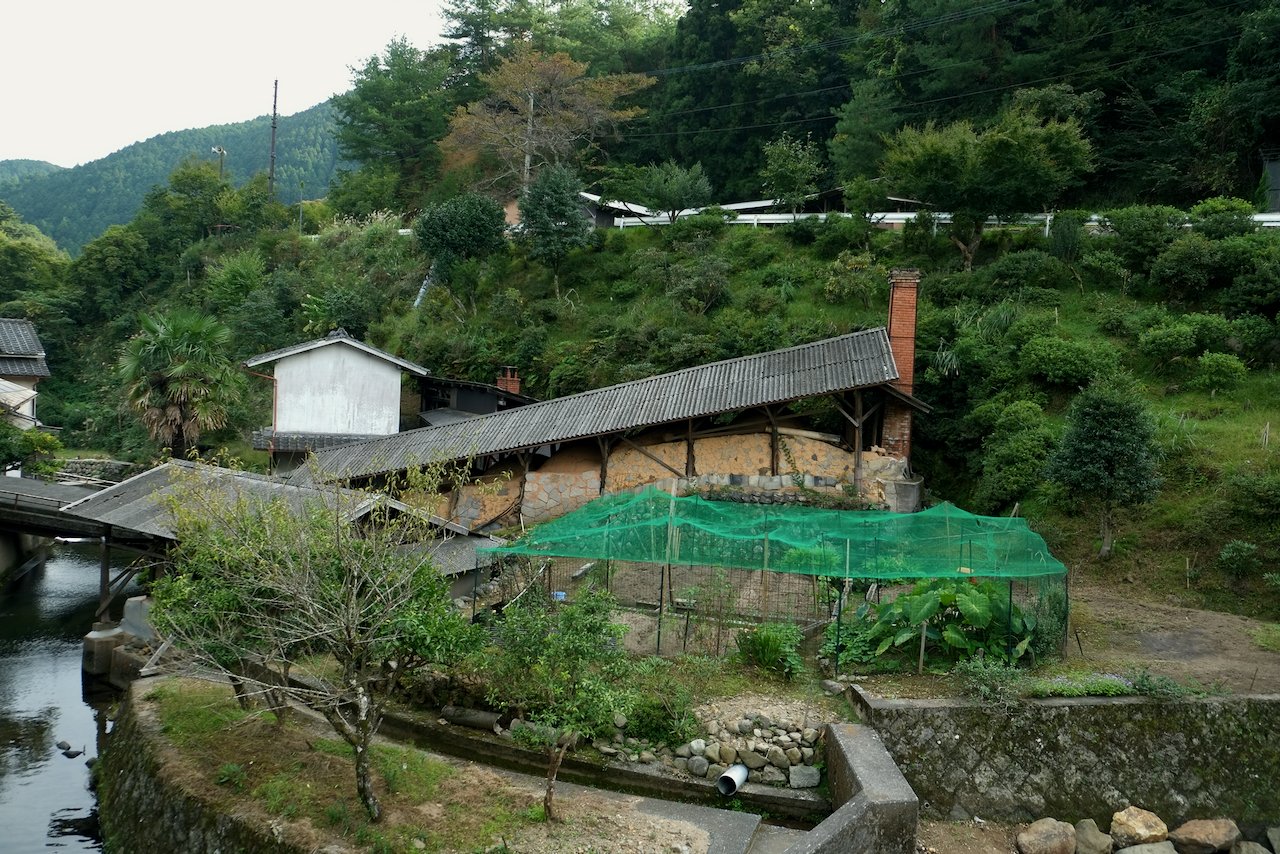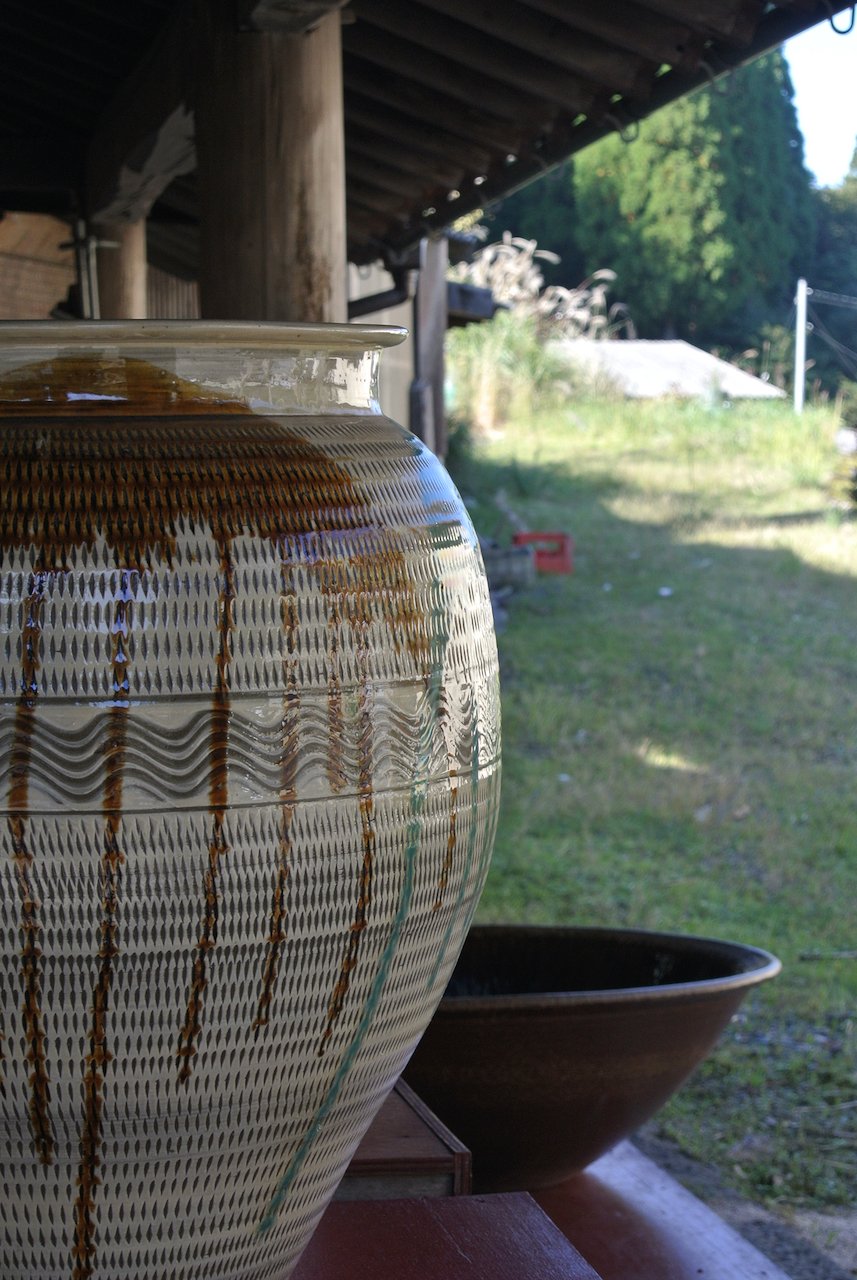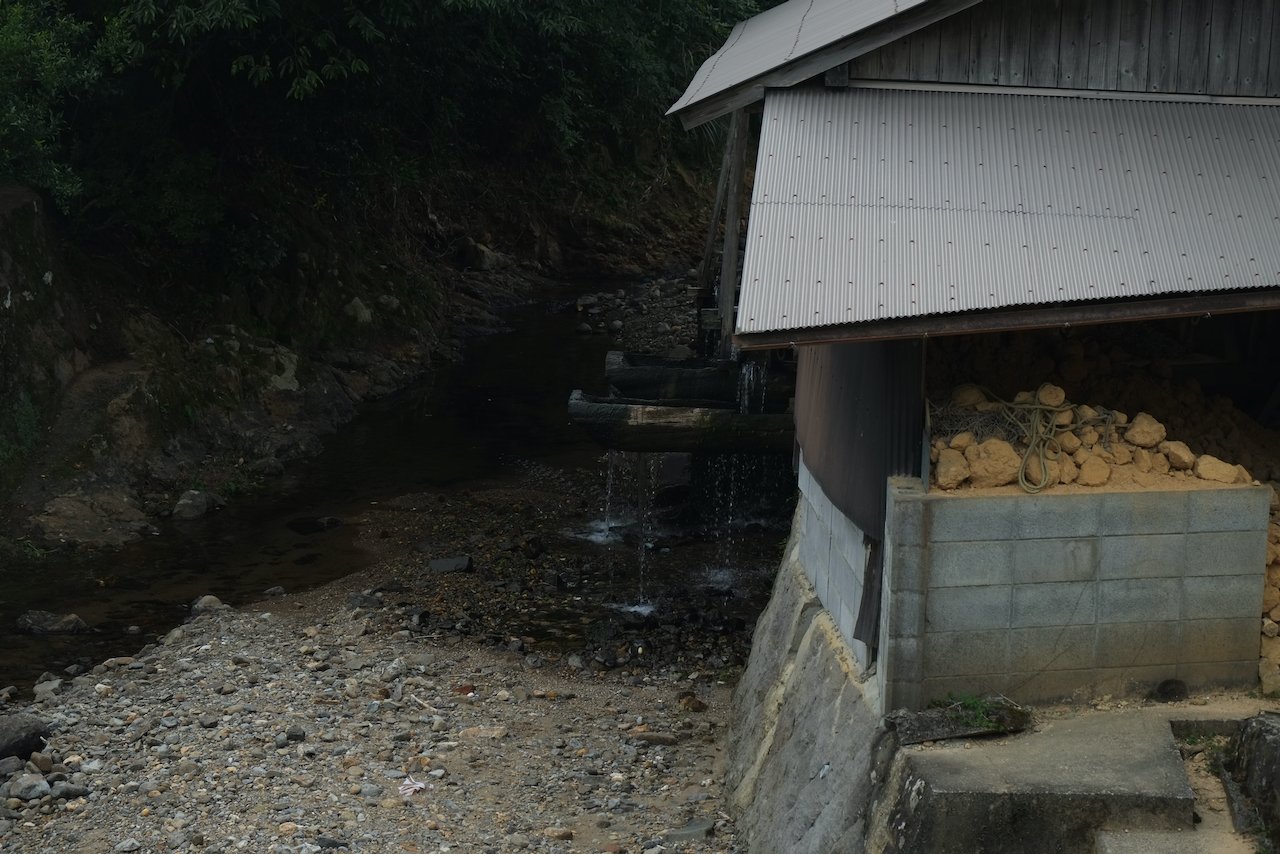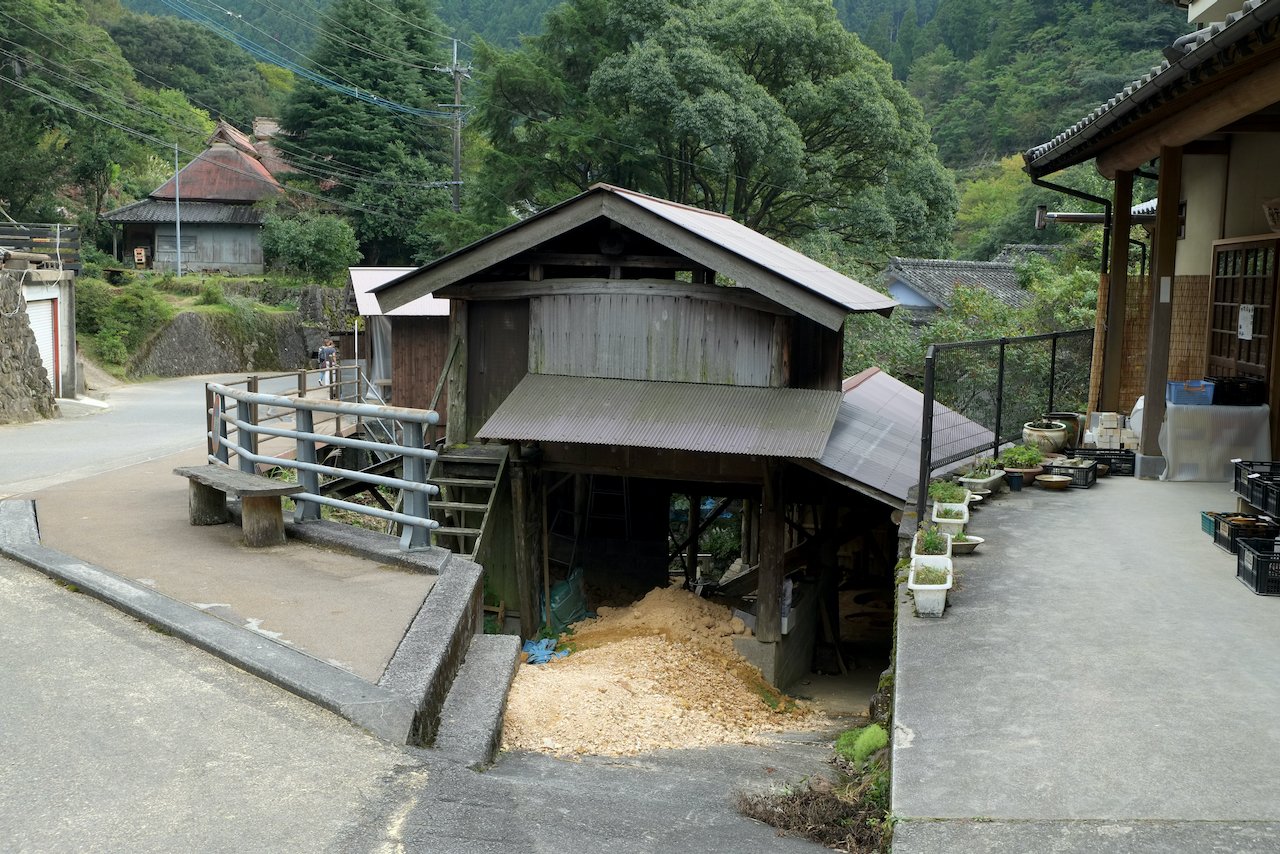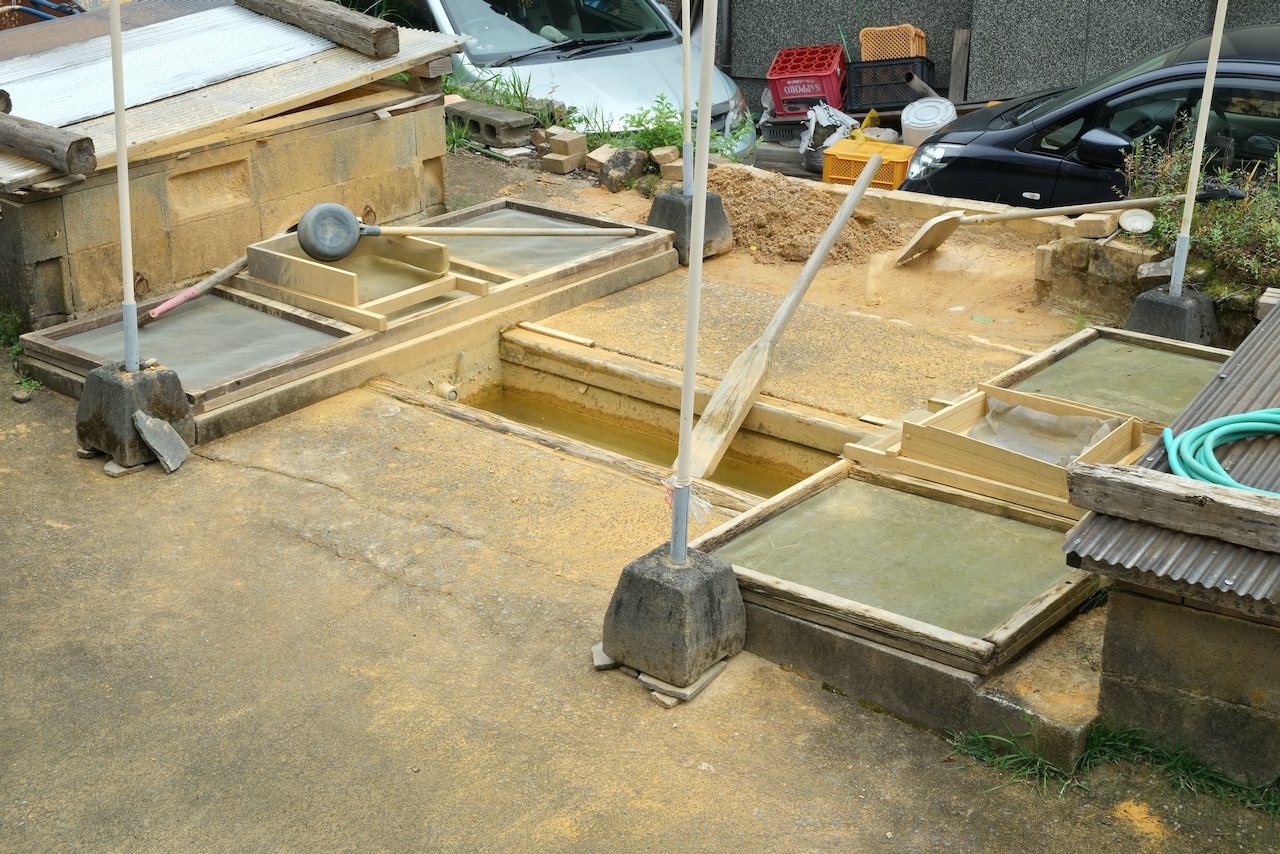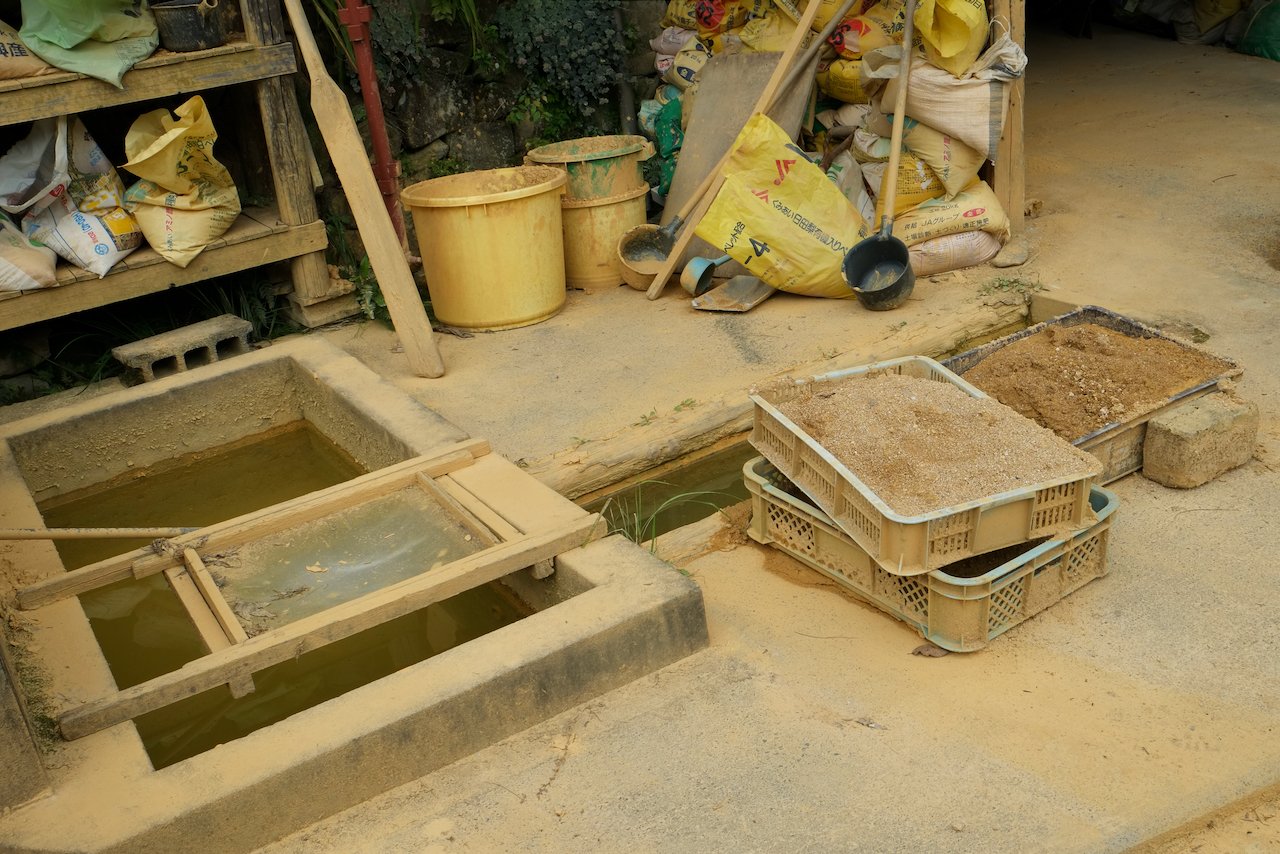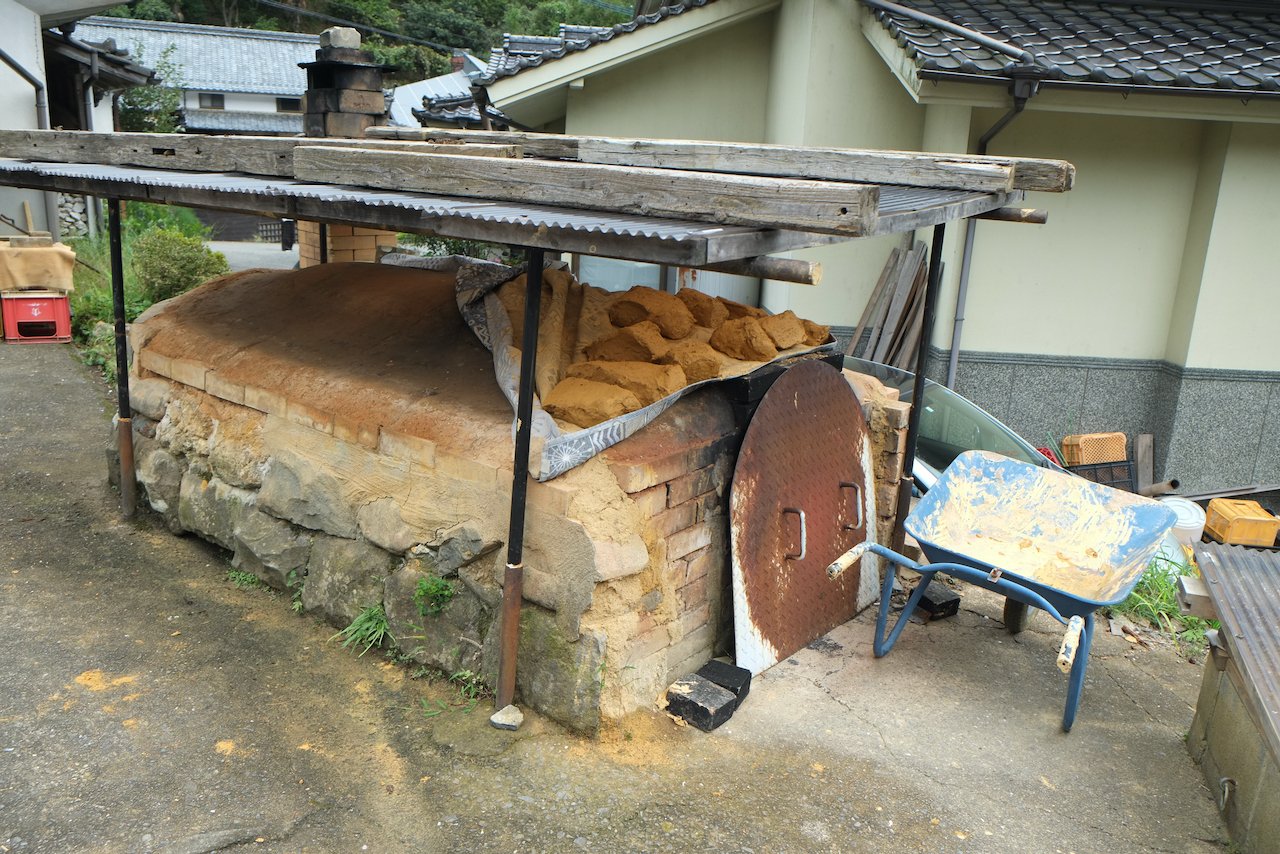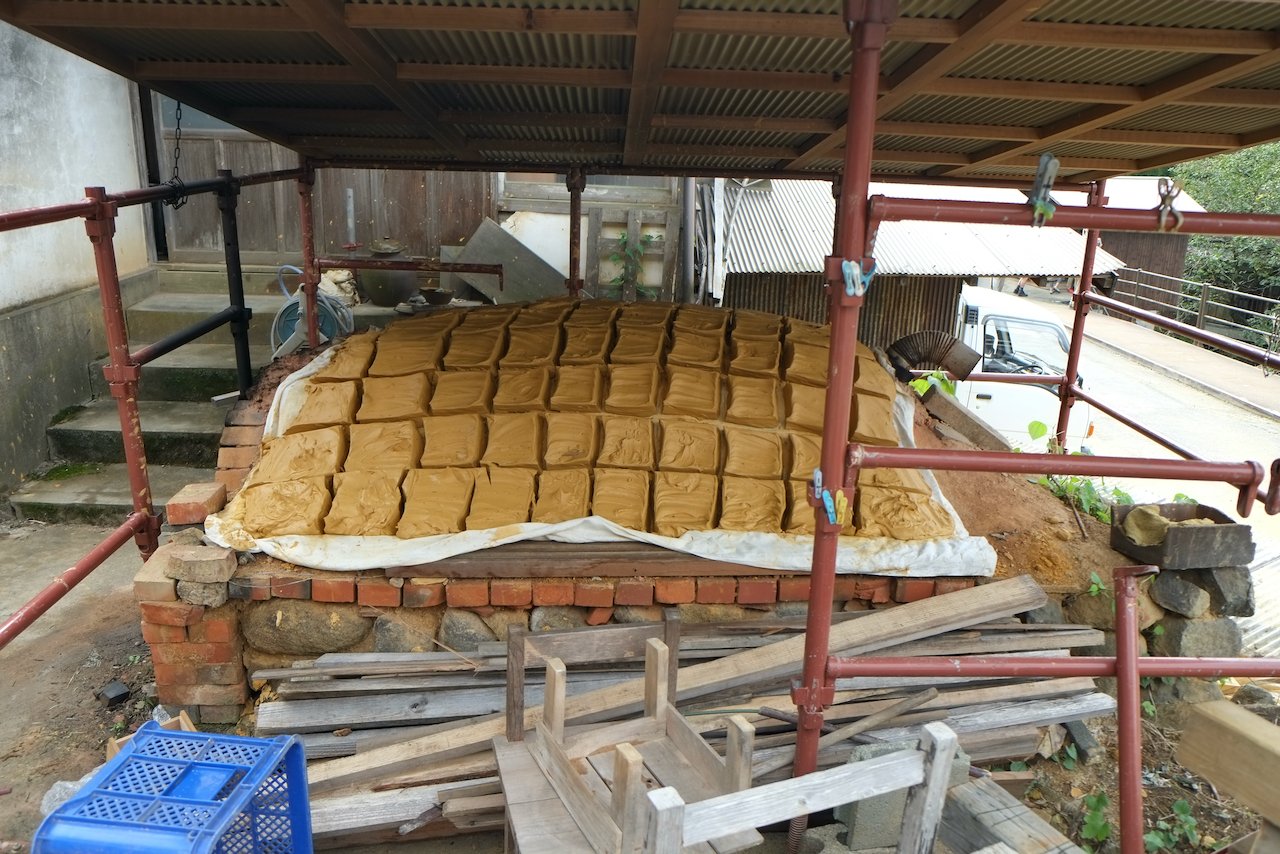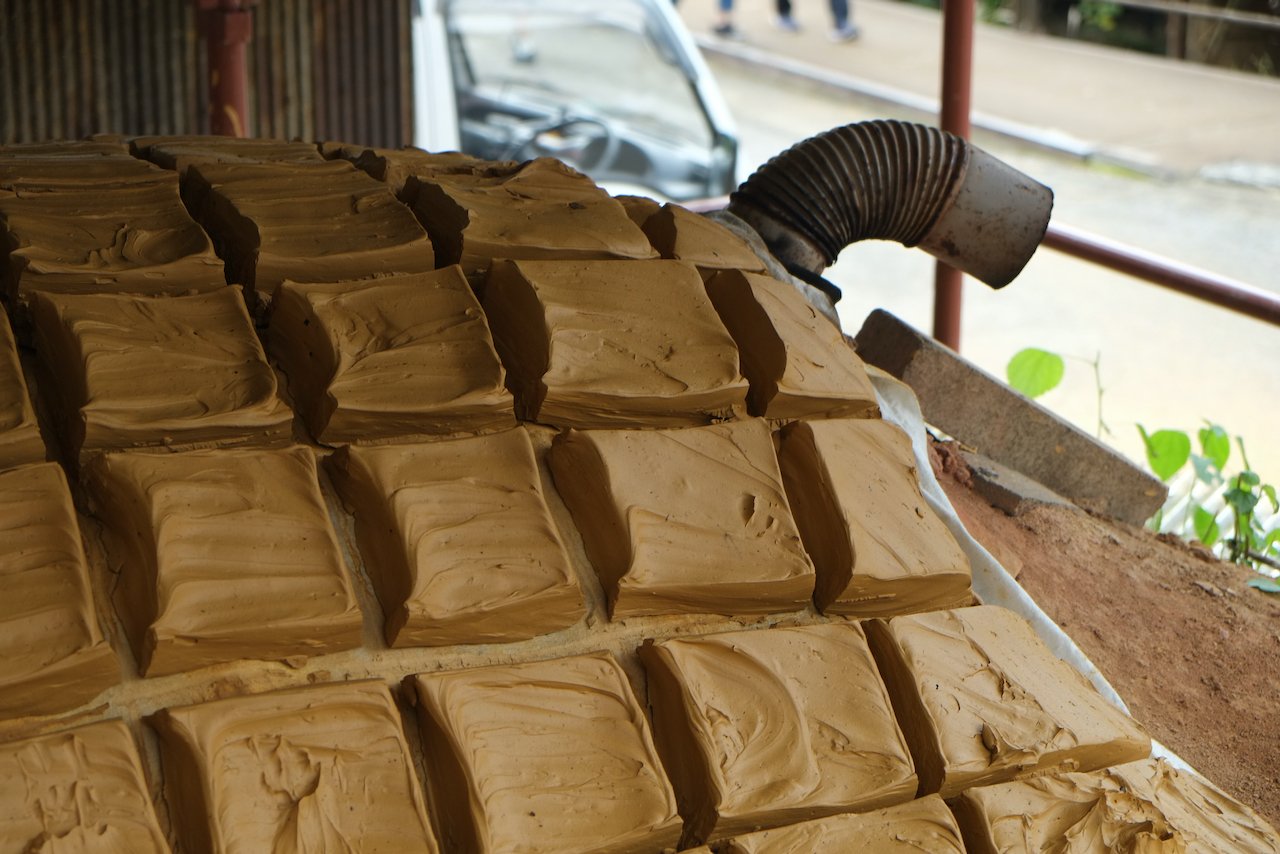onta, Japan
At festival time the quiet life of Onta which usually firmly revolves around pottery production, suddenly is buzzing - people are there to seriously buy and there is a relay of Onta women ferociously packing pottery in newspaper in every shop and men emptying kiln chambers and cleaning up pots to restock shelves. For the sale stock the main village Noborigama kiln had just been fired, so the whole village had a smokey, roasted chestnutty smell. By the end of each day punters were all clutching bags of pots. This was the first Onta pottery festival for 3 years since a large earthquake in 2016, followed by serious rains in 2017 which caused mudslides, cut off the village (we found this out because we got pounced on by news reporter who asked us what we thought of Onta’s ‘come back’ - we were ignorantly stumped - so he explained). So this festival was a time for the resilient tight-knit, collective community, to celebrate.
We parked up in a carpark above the village for three days in a camper-van surrounded by swaying pine trees and open clay pits and the thuds of the water powered clay crushers. The buzzing festival vibes of the day married with an eery and desolate dusk.
The first pots we saw from this region was actually at Hamada’s house and museum in Mashico a couple of years before. There was a big chattered storage pot that really struck us but not being able to read Japanese we didn’t know anything about it. Later we came across this amazing documentary from the 60s about Onta and matched the two together.
It makes sense that this pot would have been in Hamada’s collection as Onta-yaki (the pottery from Onta) was championed by the Mingei Movement. First by Yanagi in the 1930s for its practicality and simple, yet beautiful designs and later Leach spent time in Onta working in residence.
Onta-yaki, essentially a practical slipware made for daily use, has several distinct ingenious decorative styles that includes chattering, uchi-hakeme (dapping the white slip on the pot with a wide hakeme brush while it’s on a turning wheel) and finger marking (similar to combing). The pots are often further decorated by splashes of blue or yellow glaze being poured or brushed on in accents over the clear. Signatures and stamps never appear on the finished pots and therefore the pots represent a community rather than the individual. Each pottery family, all of which go back generations, in order to ensure future mutual sustainability, train only one successor per generation.
The rhythmic creaks and thuds of the many kara-usus (water powered clay crushers) echo all the way though Onta day and night. Powered by water from the Hanatsuki River that runs through the middle of the village. The wooden clay-crushers operate like a kind of seesaw bashing the local clay into a powder. Other than digging the clay this is the first main stage in their clay processing.
It’s mainly the women of Onta that process the local clay into something workable. It’s a hard-core, time intensive labour of love, taking about a month from start to finish. Once the clay has been pounded into a fine powder by the kara-usu it is then mixed into a thin slip in big vats in the ground and then sieved to remove bits of grit, then sieved again using a finer mesh to remove more. The slip is then dried in the sun in another massive concrete vat for about ten days. Once it’s firm enough to be scooped up by the hands its dried on wood burning driers – which allows the clay to dry more evenly with heat from underneath and air on the topside. Once it is the right consistency it’s taken into the studios. No modern machinery is used in the process at all as far as we could tell. It’s a pretty similar system to the we use to sort out our home dug clay (minus the kara-usu and clay drier but plus a plaster mixer) but the women of Onta are doing it on a much larger scale – it’s a serious undertaking.
The proverb that says ‘It takes a village to raise a child’ feels apt: it takes a village to birth these beautiful pots!
